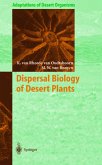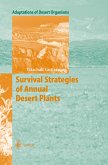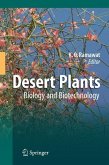Dispersal processes have important effects on plant distribution and abundance. Although adaptations to long range dispersal (telechory) are by no means rare in desert plants, many desert plant species do not possess any features to promote dispersal (atelechory), while others have structures that hamper dispersal (antitelechory). The high frequency with which atelechorous and antitelechorous mechanisms are present in plants inhabiting arid areas indicates the importance of these adaptations. Among the benefits derived from these adaptations are the spreading of germination over time, the provision of suitable conditions for germination and subsequent seedling establishment, and the maintenance of a reservoir of available seeds (seed bank). This book describes the ways and means - anatomical, morphological and ecological - by which dispersal in desert plants has evolved to ensure the survival of these species in their harsh and unpredictable environment. Dispersal processes, i.e.those processes occurring between the time of seed maturation and germination, have important effects on plant distribution and abundance. Although adaptations to long range dispersal (telechory) are by no means rare in desert plants, many desert plant species do not possess any features to promote dispersal (atelechory), while others have structures that hamper dispersal (antitelechory). The high frequency with which atelechorous and antitelechorous mechanisms are present in plants inhabiting arid areas indicates the importance of these adaptations. Among the benefits derived from these adaptations are the spreading of germination over time, the provision of suitable conditions for germination and subsequent seedling establishment and the maintenance of a reservoir of available seeds. This book describes the ways and means - anatomical, morphological and ecological - by which dispersal in desert plants has evolved to ensure the survival of these species in their harsh and unpredictable environment.
From the reviews:"One of the fundamental aspects in adaptation of desert organisms is the dispersal biology of the diaspores, which again is the basis for the establishment and habitat occupation by plants, the components of plant communities. With "Dispersal Biology of Desert Plants" in the series "Adaptations of Desert Organisms" there is now a comprehensive treatise on this subject available. .... This book breathes the spirit of great desert botanists, e.g. Murbeck and Zohary. It is of basic importance in dispersal biology of desert plants and certainly will be a basis for future works in diaspore dispersal." (Plant Systematics and Evolution)








